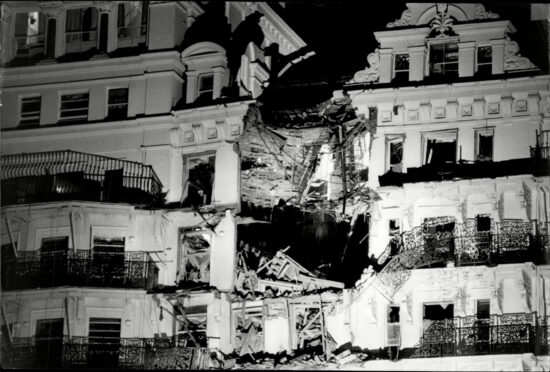
Intelligence chiefs failed to track a crack IRA hit squad which launched an abortive plot to kill Margaret Thatcher, according to new research.
Author Rory Carroll has revealed how close the Republican paramilitaries came to killing the prime minister and the central part played by Scotland – and Glasgow in particular – in the assassination attempt.
He discovered MI5 and other security and intelligence services had “lost track” of the Brighton bomber and his crew and had no clue they were operating in the UK.
Carroll has shone new light on the IRA’s attempt to assassinate Margaret Thatcher and members of her government in Brighton in 1984.
The bombers were eventually captured in “the IRA’s best-kept secret”– a small unit in the heart of Glasgow with an entire arsenal of weapons.
Police trailing another suspect Peter Sherry arrested bomber Patrick Magee at an IRA safe house in Glasgow, as he planned further attacks.
Carroll said: “You could argue that if Strathclyde had better sources among local republicans they might have got wind that an IRA unit was in Glasgow.
“But Magee and the rest of the unit kept a very low profile – they weren’t targeting anyone in Scotland, avoided Irish pubs, kept things tight.
“MI5 had lost track of Magee and had no idea he was in the UK. Once Strathclyde was alerted to Sherry and Magee heading to Glasgow, they did a good job improvising surveillance and then the raid.
“Luck played a part but they were smart enough to keep the initiative and use the element of surprise. They kept cool heads.” Magee plotted to kill former Conservative leader Thatcher and her Cabinet. By planting the Brighton bomb at The Grand Hotel during the Tory party conference in 1984, he nearly succeeded.
Thatcher and her Cabinet escaped the blast, but it left five people dead and 34 injured. At Magee’s trial, the judge Mr Justice Boreham recommended he serve a minimum of 35 years.
Carroll’s book Killing Thatcher: The IRA, The Manhunt And The Long War On The Crown recounts the crucial role of Strathclyde Police in Britain’s biggest-ever anti-terrorist operation and the eventual capture of one of the most-wanted men in recent history.
The news comes ahead of the 10th anniversary of Thatcher’s death and the 25th anniversary of the Good Friday Agreement.
Carroll added: “The IRA had hoped to kill the Margaret Thatcher and to wipe out her Cabinet on the last night of the Conservative Party conference.
“She survived – the lethal avalanche just missed her suite. Five people died and 34 were injured.
“The most audacious attack on the British state since the 1605 Gunpowder Plot triggered a vast manhunt that led, eight months later, to the dramatic capture of the bomber, Patrick Magee. He was convicted and jailed for life.”
Magee was released under the Good Friday Agreement in 1999.
Carroll interviewed more than a hundred former IRA members, police detectives, bomb disposal experts and politicians.
He added: “Intelligence agencies had no idea what was coming. Sussex police made just a cursory search of The Grand.
“Their fear was not a ticking bomb but striking miners storming the conference. The security lapses were a failure of imagination – nobody since Guy Fawkes had tried to blow up the government.”

Enjoy the convenience of having The Sunday Post delivered as a digital ePaper straight to your smartphone, tablet or computer.
Subscribe for only £5.49 a month and enjoy all the benefits of the printed paper as a digital replica.
Subscribe